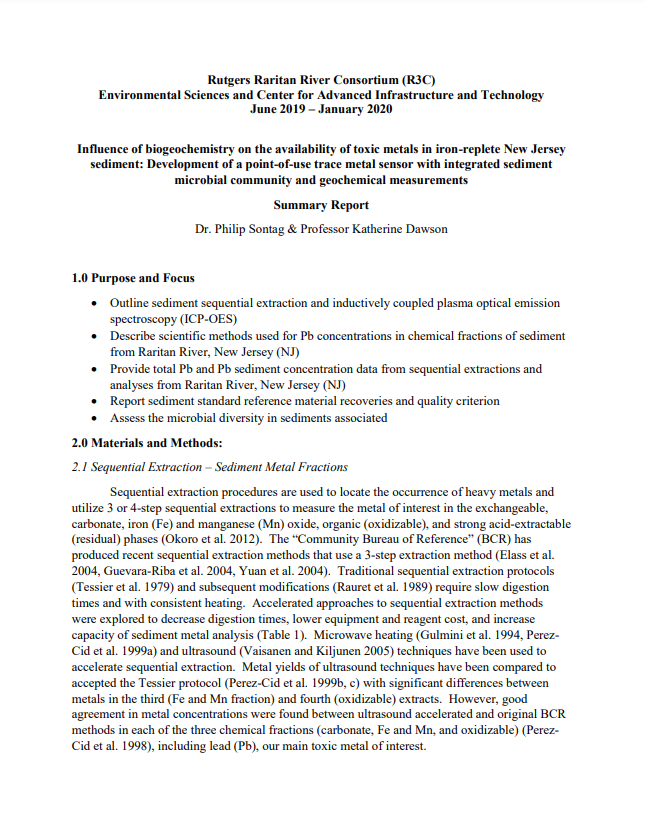Development of a point-of-use trace metal sensor with integrated sediment microbial community and geochemical measurements
Development of in-situ measurement technologies requires an in-depth understanding of the analyte and the key components from the surrounding environment. Our research utilizes the power of iron (Fe)-rich Raritan River sediment and naturally occurring enzymes (ecoenzymes) and microbial communities to detect toxic metals with a sediment-sensor, and from the sediment-sensor signal calculate toxic metal concentrations using a geochemical model. Spiking New Jersey sediment with ecoenzymes breaks down larger complex organic materials, making the toxic metals attached to Fe more available for electrochemical sensor detection. Raritan River sediment geochemistry, microbial metabolisms, and site-specific habitats have shown to contribute to lead (Pb) concentrations at various sampling sites along the Raritan River. Influences of methane metabolisms, marsh habitat, and major tributaries (e.g. Lawrence Brook) are of particular interest and will be influential in the design of the sediment-sensor and in-situ ecoenzyme digestion.
Collaborations with Professor Katherine Dawson, Professor Rick Lanthrop, and Raritan stakeholders have provided opportunities for field collection/observation and preliminary results of sediment lead (Pb) geochemistry, porewater chemistry, and microbial metabolisms at Raritan River sites. University-based research education opportunities include Alexander Sananes, an Undergraduate Researcher, who simulated Pb concentrations in the Raritan River with varying salinity, Fe-particulates, and pH using MINTEQ Geochemical model. In addition, University student developed a Python graphical user interface (GUI) which implements a numerical model based on regional sediment geochemistry and predicts a total metal concentration from the sediment-sensor signal.
A partnership with the North Brunswick Public Library has provided the opportunity to conduct science outreach and education events for children and young adults through “Home Laboratory” experiments. Those interested in participating will learn about pollutants and stewardship of the Raritan River and apply environmental “forensic” technology through building an electrochemical circuit. Any questions regarding sediment-sensor capabilities and remote student outreach please reach out to Philip Sontag – Postdoctoral Researcher, Rutgers University – Department of Environmental Sciences at philip.sontag@rutgers.edu or (715) 271-3014.
